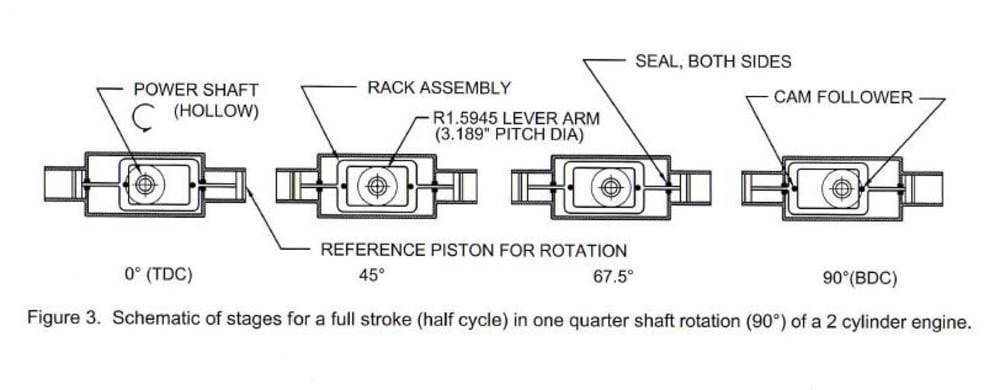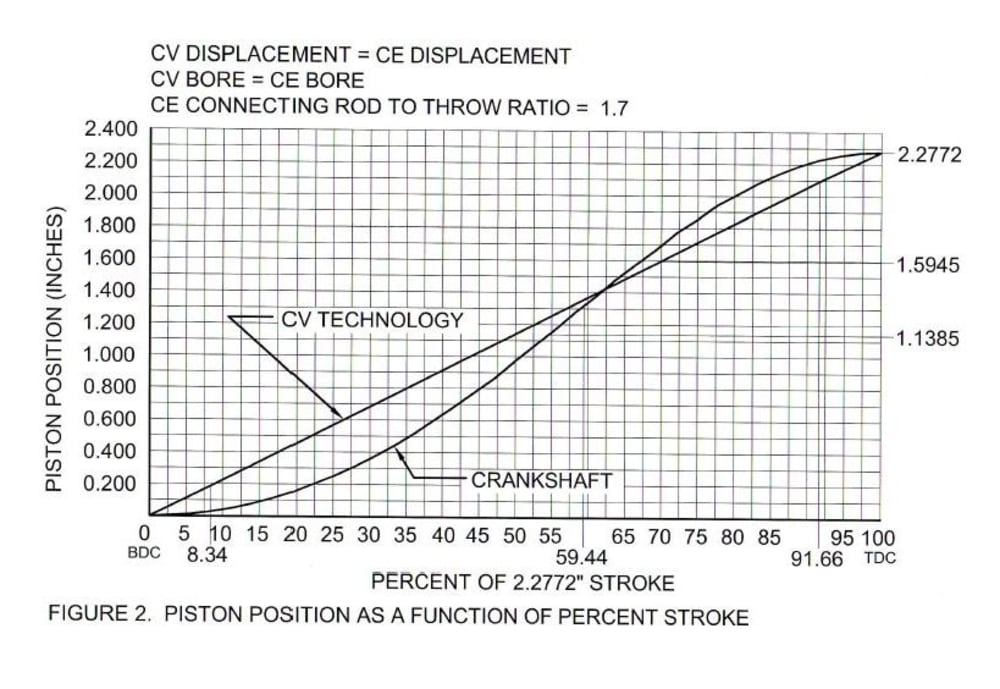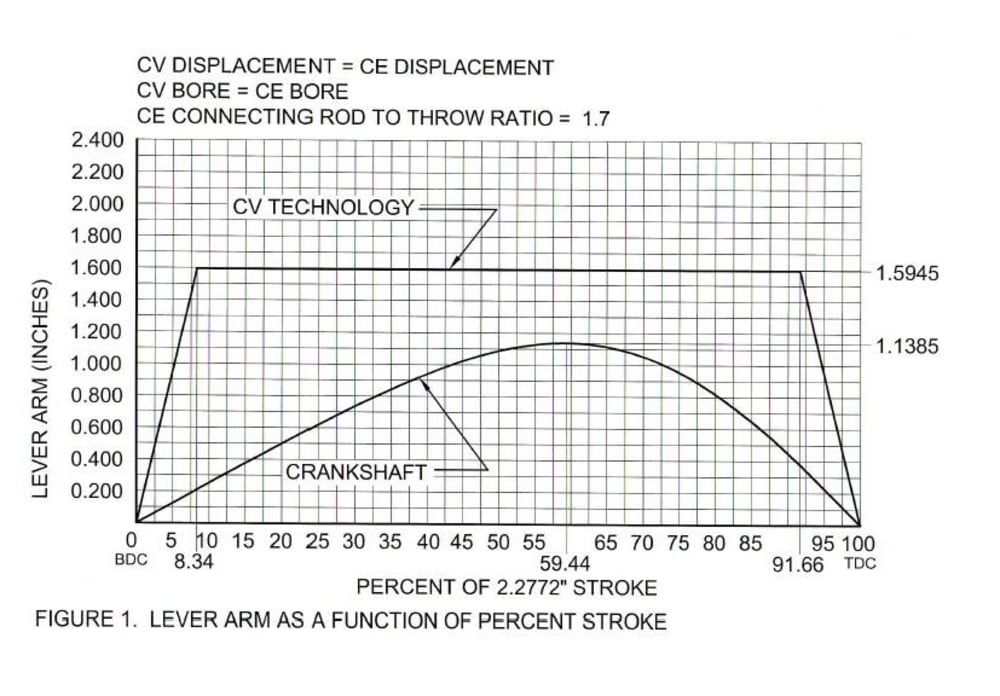
The crankshaft has been used for over 136 years without any fundamental change to continuously convert linear motion to rotary motion and vise versa. The crankshaft mechanical torque is an asymmetric sinusoidal motion that is acted on or by non-axial and non-tangential force vectors resulting in a work loss of greater than 50%. This inefficiency is recovered with a truly innovative constant velocity (CV) concept that eliminates the crankshaft. The CV concept is a linear piston pair that couples to a rotating power shaft at constant velocity, transfers control to a rotating cam path on the power shaft at constant velocity to reverse the linear motion, transfers the piston pair back to linear motion at constant velocity and repeats this indefinitely at each end of the piston stroke. The linear motion and the rotary motion are all at the same velocity (surface speed) and the control and timing is never lost. The cam on the power shaft is moving in the contact plane so that it defines the contact point by both the cam profile and the rotary motion to produce constant velocity. Figure 1 shows the crankshaft and the CV concept mechanical torque curves as a percent of piston stroke (ds/dt). At a constant force (F) the area under the respective curve is work. Some CV benefits compared to the crankshaft are:
•Develops 208% more torque for equal displacement.
•Reduces the engine/pump/compressor to 1/4 the size (weight) for equal displacement.
•Greater than 4 horsepower per pound is expected.
•Creates a lower piston chamber for supercharging and other fuel advantages.
•Sealed power case from combustion zone for less pollution and no oil or filter changes.
•No oil in diesel fuel for less ignition pollution.
•No crankcase pollution in two stroke because of alternate fuel path.
•Does not negate any top end technology such as fueling and ignition.
•Low friction and wear and all moving members are roller bearing supported.
•The CV Engine may be two or four stroke, spark ignition or diesel and will burn any commercially available fuel especially the alternative fuels.
•Less moving parts, smaller, simple fabrication and no exotic materials.
More benefits of the CV concept are revealed when the piston motion as a percent of piston stroke is examined as shown in Figure 2. Of particular interest is the last 15% before top dead center. The crankshaft reaches critical cylinder pressure very early while the CV concept is much later, faster and will provide a combustion zone that is constant volume combustion. Additional benefits:
•Constant volume combustion for high thermal efficiency (62%+) and low resulting pollution.
•Homogeneous Charge Compression Ignition possible due to sealed lower mixing chamber which is also a supercharger.
•Produces lower thermal footprint, operating noise and pollution.
•US annual fuel and oil savings potential greater than $300 billion.
Figure 3 is a schematic of the CV Engine for one complete stroke in a four strokes per revolution design.
Video
-
Awards
-
 2012 Top 100 Entries
2012 Top 100 Entries
Like this entry?
-
About the Entrant
- Name:David Haley
- Type of entry:individual
- Software used for this entry:NX, AutoCAD/Algore
- Patent status:pending








